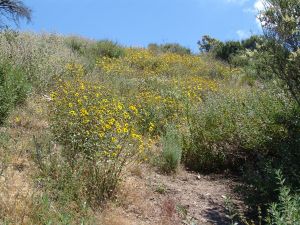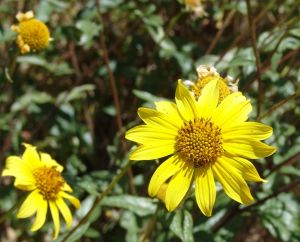Fire Following Plants

The picture at the top shows an example of this phenomenon in Lime Ridge involving two species – chaparral or slender sunflower (Helianthus gracilentus) and Hall's bush mallow (Malacothamnus hallii). It is on the edge of the area where a fire occurred in 2003 and was probably at its peak when these pictures were taken in June 2006. These plants were growing in an open spot at the edge of a large chaparral patch, along with black sage, monkey flower, and yerba santa. There were two other patches on that hillside. The smallest patch had faded away by 2011. In the next two years the others also showed significant decline. In the normal course of events, it will be 30-40 years before another fire occurs and brings them back.

Close up of Slender Sunflower

Close up of bush mallow
Lesley Hunt
June 2006 & January 2013




 Join
Join Donate
Donate Volunteer
Volunteer Maps
Maps Newsletter
Newsletter Facebook
Facebook
